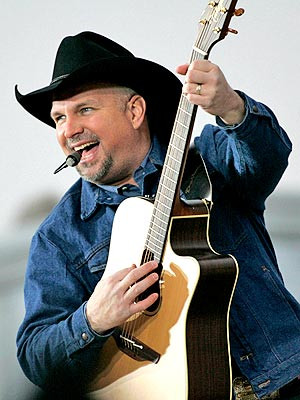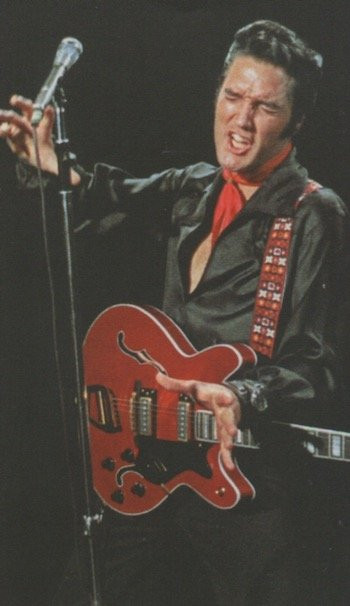Garth Brooks might not have been on my radar in my younger years, but hearing Vancouver DJ Red Robinson compare his concert excitement to that of Elvis Presley in 1957 definitely piqued my interest. Could Garth Brooks truly generate that level of fan frenzy? The answer came loud and clear when tickets for his Spokane show in 2017 went on sale. Eighty-four thousand tickets vanished online in just 90 minutes! Seven sold-out shows later, it was undeniable: Garth Brooks commands a devoted following.

It’s this very concept of devoted fans and the emotional connection to music that brings us to “The Dance,” arguably Garth Brooks’ signature song. While seemingly a ballad about lost love, the lyrics of “The Dance,” penned by Tony Arata, resonate on a deeper level when considering the long and multifaceted relationship between Elvis Presley and his fans. The poignant lines:
“Looking back on the memory of the dance we shared ’neath the stars above,
For a moment all the world was right.
How could I have known that you’d ever say goodbye.”
“And now I’m glad I didn’t know the way it all would end, the way it all would go.
Our lives are better left to chance.
I could have missed the pain, but I’d have had to miss the dance.”
These words, though about a personal relationship, become a powerful metaphor for the evolving journey Elvis took with his fans throughout his career. Let’s explore how “the dance” reflects the different phases of Elvis’s connection with his audience.
Elvis Presley’s Evolving “Dance” with His Fans
Elvis’s fanbase wasn’t a static entity; it was a dynamic and evolving group that experienced different “dances” with the King of Rock and Roll across decades.
Initially, in 1954-55, a wave of fans emerged as Elvis’s raw energy and revolutionary sound burst onto the scene, primarily in the Southern states. These early adopters discovered him through local radio play of his Sun Records and electrifying performances on shows like the Louisiana Hayride.
The second surge of fandom arrived nationwide in 1956-57. Elvis became a phenomenon, touring over 100 cities, dominating movie screens, and captivating living rooms through twelve iconic TV appearances. This period cemented his status as a cultural icon and broadened his fanbase exponentially.
A third wave embraced Elvis upon his return from army service in 1960. This “new” Elvis was a more polished pop singer and movie star, appealing to a different, perhaps more mainstream audience. He continued to attract fans, albeit with a shifted image.
The 1970s witnessed a fourth group of fans joining the Elvis phenomenon. His Las Vegas residency and nationwide tours drew massive crowds, a mix of loyalists from previous eras and newcomers drawn to his зрелый stage presence and powerful performances.
Finally, even after his passing in 1977, a smaller but dedicated group of new fans has discovered and embraced Elvis, ensuring his legacy continues to resonate.

However, this “dance” wasn’t always smooth. As Elvis transitioned through different phases of his career, some fans inevitably fell away, feeling left behind by his evolving musical style and image. His two-year army service from 1958 marked a significant shift. While new music kept his name on the charts, his absence from the public eye led many young fans, particularly teenagers, to find new idols in artists like Ricky Nelson and Frankie Avalon. Yet, the initial passion, “the dance” they shared with Elvis in those early years, likely remained a powerful memory.
Embracing a New Elvis in the Sixties
As a member of that third wave of fans, discovering Elvis in the early 1960s meant experiencing him primarily as a movie star and pop crooner. For a 13-year-old in 1962, hits like “Return to Sender” and films like Girls! Girls! Girls! were the gateway to Elvis Presley. Stage performances felt distant, a world away from our hometowns.
However, this era also brought disappointment for some. The rise of The Beatles in 1964 challenged Elvis’s reign. Many felt he didn’t adapt to the changing musical landscape, seemingly relinquishing his “King of Rock ‘n’ Roll” title. Even as a devoted fan, a sense of disillusionment crept in as Elvis continued on a Hollywood-centric path with less impactful music. Yet, the deep connection forged in 1962, “the dance” that began then, prevented a complete abandonment of loyalty, even through the artistically weaker years of the mid-to-late sixties. Many fans, however, did step away during this period, undoubtedly with a sense of sadness.
Elvis’s 1970s comeback era, marked by his return to live performance, attracted a fourth wave of fans. These were often adults, as Elvis, now in his thirties, appealed less to the teenage demographic. Vegas showrooms and arenas filled with audiences eager to see the зрелый and evolved Elvis. Many were likely rekindled flames – former fans returning to the fold – alongside genuine newcomers, all joining the ongoing “dance.”
The Painful Truth and Enduring Legacy
Tragically, the “dance” with this fourth group of fans ended abruptly and painfully with Elvis’s untimely death at 42. Initial sadness gave way to disappointment and even anger as the idealized image of Elvis crumbled under the weight of revelations about his personal struggles. Coming to terms with the imperfections of a long-held idol was a difficult process.
Ultimately, the immense talent and musical joy Elvis provided couldn’t be overshadowed by his human frailties. The profound impact of that initial “dance,” the spark of connection from 1962 onwards, proved too enduring to extinguish. The decision to remain an Elvis Presley fan, despite the pain and imperfections, echoes the sentiment of Garth Brooks’ lyrics: “I could have missed the pain, but I’d have had to miss the dance.” And the “dance” with Elvis Presley, for millions, was an experience worth cherishing, pain and all.
